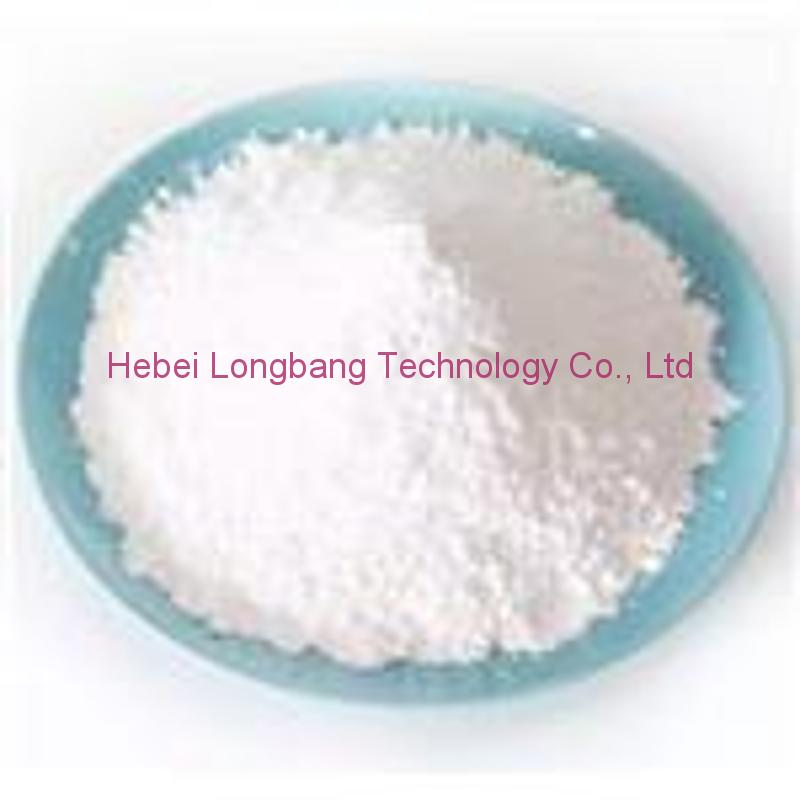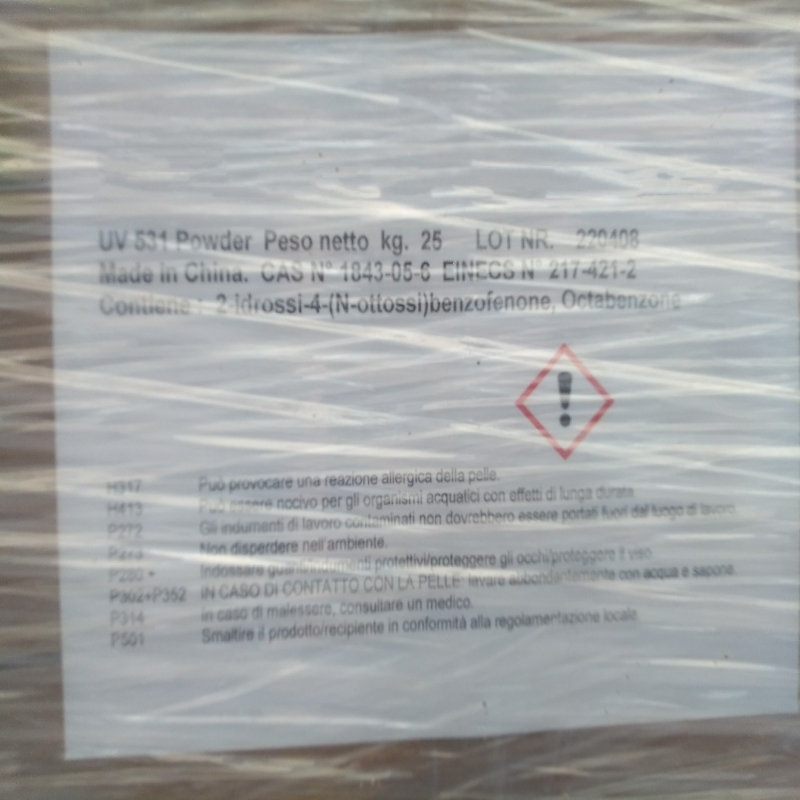-
Categories
-
Pharmaceutical Intermediates
-
Active Pharmaceutical Ingredients
-
Food Additives
- Industrial Coatings
- Agrochemicals
- Dyes and Pigments
- Surfactant
- Flavors and Fragrances
- Chemical Reagents
- Catalyst and Auxiliary
- Natural Products
- Inorganic Chemistry
-
Organic Chemistry
-
Biochemical Engineering
- Analytical Chemistry
-
Cosmetic Ingredient
- Water Treatment Chemical
-
Pharmaceutical Intermediates
Promotion
ECHEMI Mall
Wholesale
Weekly Price
Exhibition
News
-
Trade Service
Editor's note: The theory and practice of recovering phosphorus from sewage began in Europe at the end of the last century, when it was only a "spontaneous interest" or "hobby"
in academia and industry.
As the phosphorus crisis loomed, Europe, which was generally devoid of phosphate mines, realized the seriousness of the problem and began to develop government regulations
on phosphorus recovery.
Especially when sludge incineration gradually evolved into the ultimate sludge disposal trend in Europe, all countries emphasized higher phosphorus recovery efficiency, ≥ 80% is the universally emphasized goal
.
Following the implementation of the Swiss government regulation mandating the recovery of 80% phosphorus from wastewater treatment plants from 2016, Austria has recently enacted a regulation on the recovery of at least 80% phosphorus from the incineration ash of residual sludge from wastewater treatment by 2030 and notified the European Union
.
Since the efficiency of phosphorus recovery from aqueous and sludge phases is limited to ~25% and ~50%, 80% phosphorus recovery is actually a goal
that can only be achieved in combination with sludge incineration.
The Austrian government has informed the EU that it will issue a national regulation aimed at recovering phosphorus
from sludge incineration ash.
Where the treatment load is ≥ 2 000 equivalent population sewage treatment after incineration sludge, 60%~80% of phosphorus
must be recovered.
The regulation covers best available techniques (BAT) and new alternative fuels
in incineration plants.
This section on "Sludge Incineration and Phosphorus Recovery" (Chapter 4, p.
16) designates that the remaining sludge from a sewage treatment facility ≥ 2,000 equivalent population will be incinerated
by 1 January 2030.
Licensed to offer 3 phosphorus recovery options:
1 At least 80% phosphorus
recovered from sludge ash.
2 All incineration ash itself can be used to produce fertilizers that comply with national fertilizer regulations (Düngemittelgesetz 2021, BGBl.
I 103/2021).
3 60% of the phosphorus load flowing into the sewage treatment plant can be recovered in situ by "thermal, chemical or physicochemical methods" (sludge can be eliminated if method 3 is chosen).
In all cases, the operator must publish an annual report on the amount of phosphorus entering the sewage/ash, including the method of phosphorus recovery and the amount of
phosphorus recovered.
The first report was released
on April 30, 2031.
Index of Regulations:
Austrian Administrative Regulations 2022 – AVV 2022 (Waste Incineration Regulations), p
.
4.
"Klärschlammverbrennung und Phosphorrückgewinnung" (sludge treatment.
Sewage sludge incineration and phosphorus recovery), notification (26/9/2022) to and issued by the European Commission, notification number: 2022/645/A (searched in EU TRIS, year = 2022, number = 645)
Supplemental Information
Over the past few decades, European sludge treatment and disposal methods have changed
dramatically.
Based on environmental safety and avoiding the generation of greenhouse gases, the EU has formulated strict sludge management regulations (86/278/EC), municipal sewage treatment directives (91/271/EC), landfills directives (99/31/EC), waste framework directives (08/98/EC), mainly on sludge landfill and agricultural use
.
This has led to the emergence of other treatment/disposal methods such as heat treatment, drying and incineration technologies
.
The average sludge incineration rate in the EU has increased from 27% in 2010 to 41.
5% in 2015, and 59% of the approximately 1.
7 million t/a sludge incineration ash in the world every year comes from the EU
.
The Netherlands and Switzerland currently require almost all sludge to be incinerated, while more than 50% of the sludge produced by Denmark, Slovenia, Belgium, Germany and other countries has begun to be incinerated
.
It is foreseeable that the proportion of sludge incineration treatment and disposal will continue to grow in Europe and will become the ultimate way
of sludge treatment and disposal.
Therefore, the European support policies on sludge treatment and disposal make ash phosphorus recovery possible to a certain extent, and virtually promote the development of
ash phosphorus recovery technology.
Switzerland was the first country in Europe to legislate mandatory phosphorus recovery from waste, and Article 15 of its Waste Treatment Regulation (2016) clearly stipulates that phosphorus recovery from sludge ash should be carried out with state-of-the-art technology, or that phosphorus-rich waste can be disposed of reasonably and properly so that it can be recycled
later when the technology matures.
Germany's latest Sewage Sludge Regulation (2018) makes phosphorus recovery an obligation for most sewage treatment plants in Germany, and phosphorus recovery from sludge incineration ash alone is one of the recommended methods of
the regulation.
Austria's Draft Federal Waste Plan also mandates the recovery of phosphorus from sewage treatment systems, so that sewage treatment plants have to incinerate sludge from ash for phosphorus recovery in order to achieve the 90% phosphorus recovery rate
stipulated by the decree.
With the advent of legislation in other European countries, Sweden and Denmark have also set strategic targets for recovering 60% and 80% phosphorus from wastewater, respectively; Since the efficiency of phosphorus recovery from aqueous and sludge phases is limited to 25% and 50% respectively, these targets can only be achieved
in sludge incineration ash.
In addition, the introduction of the EU's latest Fertilizer Products Regulation (2019) has opened up the market barriers for recycled phosphorus products in Europe, and all recycled fertilizers that comply with the Fertilizer Products Regulation can be sold in any EU country, and automatically end the traditional state that sludge is "waste", completely breaking the limitation that recycled phosphorus products can only be sold in the country according to national laws, so that ash phosphorus recycling products can circulate
freely in the market.
References: Xiaodi Hao, Jinglun Yu, Ranbin Liu, Yuan Liang, Fusheng Li (2020), Phosphorus recovery of ash from residual sludge incineration and its technical progress
.
Journal of Environmental Science, 40(4): 1149-1159
.
Editor's note: The theory and practice of recovering phosphorus from sewage began in Europe at the end of the last century, when it was only a "spontaneous interest" or "hobby"
in academia and industry.
As the phosphorus crisis loomed, Europe, which was generally devoid of phosphate mines, realized the seriousness of the problem and began to develop government regulations
on phosphorus recovery.
Especially when sludge incineration gradually evolved into the ultimate sludge disposal trend in Europe, all countries emphasized higher phosphorus recovery efficiency, ≥ 80% is the universally emphasized goal
.
Following the implementation of the Swiss government regulation mandating the recovery of 80% phosphorus from wastewater treatment plants from 2016, Austria has recently enacted a regulation on the recovery of at least 80% phosphorus from the incineration ash of residual sludge from wastewater treatment by 2030 and notified the European Union
.
Since the efficiency of phosphorus recovery from aqueous and sludge phases is limited to ~25% and ~50%, 80% phosphorus recovery is actually a goal
that can only be achieved in combination with sludge incineration.
The Austrian government has informed the EU that it will issue a national regulation aimed at recovering phosphorus
from sludge incineration ash.
Where the treatment load is ≥ 2 000 equivalent population sewage treatment after incineration sludge, 60%~80% of phosphorus
must be recovered.
The regulation covers best available techniques (BAT) and new alternative fuels
in incineration plants.
This section on "Sludge Incineration and Phosphorus Recovery" (Chapter 4, p.
16) designates that the remaining sludge from a sewage treatment facility ≥ 2,000 equivalent population will be incinerated
by 1 January 2030.
Licensed to offer 3 phosphorus recovery options:
1 At least 80% phosphorus
recovered from sludge ash.
2 All incineration ash itself can be used to produce fertilizers that comply with national fertilizer regulations (Düngemittelgesetz 2021, BGBl.
I 103/2021).
3 60% of the phosphorus load flowing into the sewage treatment plant can be recovered in situ by "thermal, chemical or physicochemical methods" (sludge can be eliminated if method 3 is chosen).
In all cases, the operator must publish an annual report on the amount of phosphorus entering the sewage/ash, including the method of phosphorus recovery and the amount of
phosphorus recovered.
The first report was released
on April 30, 2031.
Index of Regulations:
Austrian Administrative Regulations 2022 – AVV 2022 (Waste Incineration Regulations), p
.
4.
"Klärschlammverbrennung und Phosphorrückgewinnung" (sludge treatment.
Sewage sludge incineration and phosphorus recovery), notification (26/9/2022) to and issued by the European Commission, notification number: 2022/645/A (searched in EU TRIS, year = 2022, number = 645)
Supplemental Information
Supplemental InformationOver the past few decades, European sludge treatment and disposal methods have changed
dramatically.
Based on environmental safety and avoiding the generation of greenhouse gases, the EU has formulated strict sludge management regulations (86/278/EC), municipal sewage treatment directives (91/271/EC), landfills directives (99/31/EC), waste framework directives (08/98/EC), mainly on sludge landfill and agricultural use
.
This has led to the emergence of other treatment/disposal methods such as heat treatment, drying and incineration technologies
.
The average sludge incineration rate in the EU has increased from 27% in 2010 to 41.
5% in 2015, and 59% of the approximately 1.
7 million t/a sludge incineration ash in the world every year comes from the EU
.
The Netherlands and Switzerland currently require almost all sludge to be incinerated, while more than 50% of the sludge produced by Denmark, Slovenia, Belgium, Germany and other countries has begun to be incinerated
.
It is foreseeable that the proportion of sludge incineration treatment and disposal will continue to grow in Europe and will become the ultimate way
of sludge treatment and disposal.
Therefore, the European support policies on sludge treatment and disposal make ash phosphorus recovery possible to a certain extent, and virtually promote the development of
ash phosphorus recovery technology.
Switzerland was the first country in Europe to legislate mandatory phosphorus recovery from waste, and Article 15 of its Waste Treatment Regulation (2016) clearly stipulates that phosphorus recovery from sludge ash should be carried out with state-of-the-art technology, or that phosphorus-rich waste can be disposed of reasonably and properly so that it can be recycled
later when the technology matures.
Germany's latest Sewage Sludge Regulation (2018) makes phosphorus recovery an obligation for most sewage treatment plants in Germany, and phosphorus recovery from sludge incineration ash alone is one of the recommended methods of
the regulation.
Austria's Draft Federal Waste Plan also mandates the recovery of phosphorus from sewage treatment systems, so that sewage treatment plants have to incinerate sludge from ash for phosphorus recovery in order to achieve the 90% phosphorus recovery rate
stipulated by the decree.
With the advent of legislation in other European countries, Sweden and Denmark have also set strategic targets for recovering 60% and 80% phosphorus from wastewater, respectively; Since the efficiency of phosphorus recovery from aqueous and sludge phases is limited to 25% and 50% respectively, these targets can only be achieved
in sludge incineration ash.
In addition, the introduction of the EU's latest Fertilizer Products Regulation (2019) has opened up the market barriers for recycled phosphorus products in Europe, and all recycled fertilizers that comply with the Fertilizer Products Regulation can be sold in any EU country, and automatically end the traditional state that sludge is "waste", completely breaking the limitation that recycled phosphorus products can only be sold in the country according to national laws, so that ash phosphorus recycling products can circulate
freely in the market.
References: Xiaodi Hao, Jinglun Yu, Ranbin Liu, Yuan Liang, Fusheng Li (2020), Phosphorus recovery of ash from residual sludge incineration and its technical progress
.
Journal of Environmental Science, 40(4): 1149-1159
.







